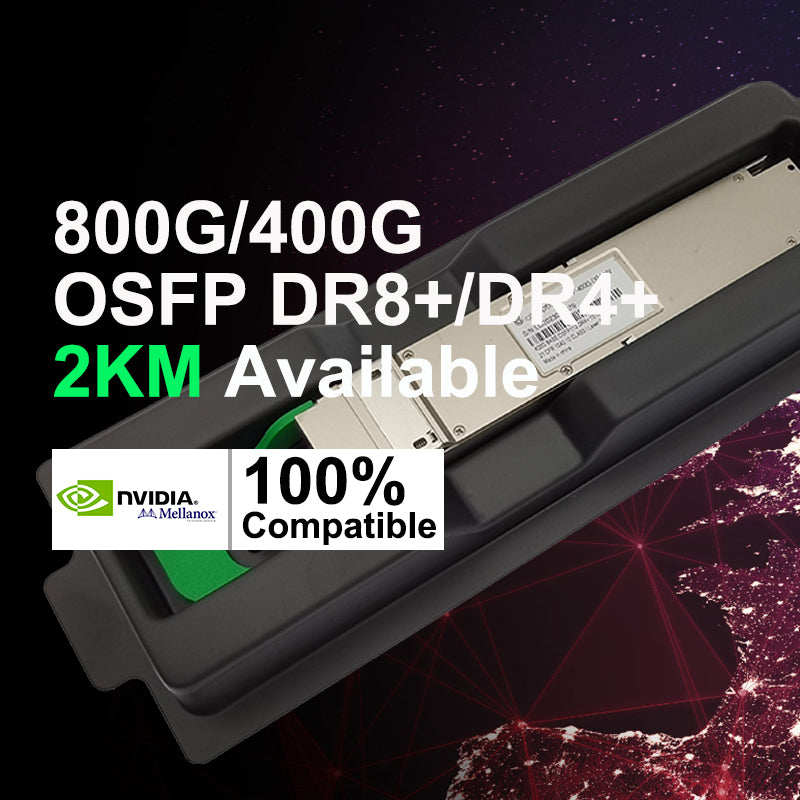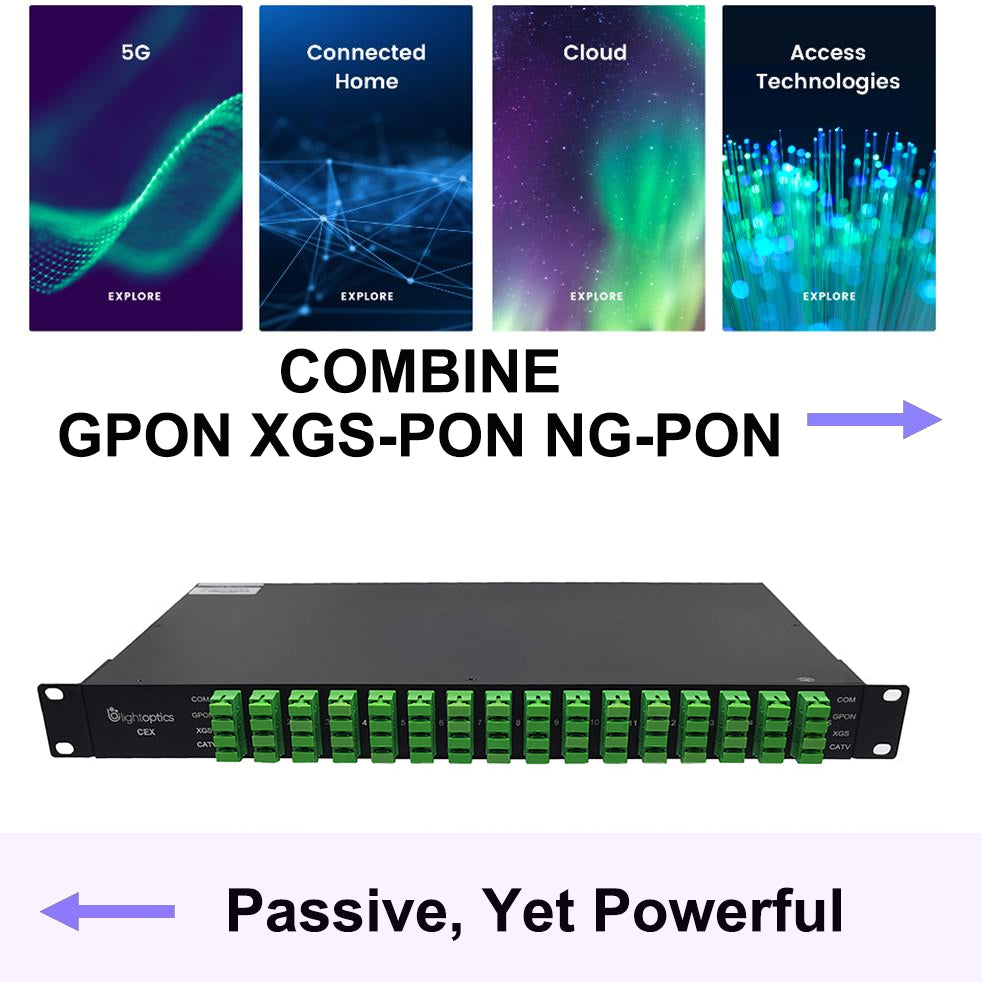Fiber SFP vs Copper SFP
What is the difference between fiber and copper SFP?
Having been compared for many years, fiber and copper seem to be competitors. Someone says it has been a lasting war between fiber and copper. Although, copper has been used for a longer time, now, fiber has already made a foothold in the industry of communication. Besides, with the continuous development of copper technology, the difference between copper and fiber is becoming smaller and smaller. Similarly, the war between fiber and copper also exists in the filed of the SFP module. However, is this a war? What is the difference between fiber and copper SFP? This article will make a comparison of their strength and weaknesses.
What Is Fiber SFP?
Fiber SFP is a type of compact, hot-pluggable optical transceiver module, which is widely used for both telecommunication and data communications applications. Fiber SFP modules are commonly available in several different categories:
The 1000BASE-SX SFP operates on legacy 50 μm multimode fiber links up to 550 m and on 62.5 μm multimode fibers up to 220 m. It can support up to 1km over laser-optimized 50 μm multimode fiber cable.
The 1000BASE-LX/LH SFP operates on standard single-mode fiber-optic link spans of up to 10 km and up to 550 m on any multimode fibers.
The 1000BASE-EX SFP operates on standard single-mode fiber-optic link spans of up to 40 km in length.
The 1000BASE-ZX SFP operates on standard single-mode fiber-optic link spans of up to approximately 70 km in length.
Fiber SFP with LC or SC optical connectors is used in Fast Ethernet and Gigabit Ethernet. Fiber SFP can offer different wavelengths and optical power budgets to allow transmission distances from 550m to 120km. Besides, there are other SFP types like CWDM SFP and DWDM SFP, which are used to increase the bandwidth of the fiber network. CWDM SFP modules come in 8 wavelengths covering from 1470 nm to 1610 nm, while DWDM SFP is designed for a longer transmission distance, whose maximum wavelength is 1620 nm and the maximum transmission distance is 200 km.
What Is Copper SFP?
Copper SFP is also a kind of SFP (small form-factor pluggable) or mini GBIC (gigabit interface converter) transceiver module. Copper SFP supports 1000Mbps over Cat5 cables with RJ45 connector interface, which allows communications over the Cat5 unshielded twisted-pair copper cable of link lengths up to 100 m. It supports the standard of 10/100BASE-T, 1000BASE-T, and 10/100/1000BASE-T transceivers. Among them, 1000BASE-T is the most commonly used which allows a segment with a maximum length of 100 m and allows auto-negotiation between 100Mbps and 1000Mbps. It can be used in data centers for server switching, LANs, uplinks, or directly to the desktop for broadband applications.
Copper SFP vs Fiber SFP
Fiber vs Copper SFP Module: Under the Condition of Long Distance, Fiber SFP Is More Flexible.
The SFP fiber module provides different wavelengths and optical power budgets, allowing distances from 550 meters to 120 kilometers. Some statics also shows that traditional SFP can reach 4.25Gb / s at 150 meters, or reach 1.25Gb / s when 160km runs and can reach a variety of ranges/speeds between the two according to the type of fiber. Usually, when the running distance is more than 328 feet / 100 meters, the optical fiber SFP module must be considered instead of the copper SFP RJ45 module, because 1000Mbps can only reach 100 meters through the copper cable wiring. In this sense, fiber SFP provides a substantial advantage over copper SFP.
Fiber vs Copper SFP Module: Under Limited Conditions, Copper SFP Is the Inevitable Result.
For short-distance links on Gigabit switches, there is no difference if SFP ports or RJ45 ports are used to interconnect switches. Copper SFP is popular for short-range uplink because using copper SFPs and jumpers is easier and cheaper. The SFP port is mainly used to allow longer-distance fiber connections. In particular, in some cases, copper SFP will make sense if the switch on one side does not have copper ports but SFP slots and the switch on the other side only has copper that can’t be fitted with fiber ports. In addition, using copper SFP to connect conventional copper Gigabit ports is a wise choice to make full use of the corresponding number of SFPs on existing connection switches.
Fiber vs Copper SFP Module: Fiber SFP Is More Secure.
Safety is a factor that we must not neglect when considering. As far as safety is concerned, the use of the optical fiber SFP module is superior to that of the RJ45 SFP module. This is because the optical fiber does not conduct electricity, which makes it able to resist thunder.
Fiber vs Copper SFP Module: Operating Temperature
Both copper SFP and fiber SFP support 0 to 70°C (32 to 158°F) case temperature as default. However, the power consumption and case surface will affect the temperature when copper SFP and fiber SFP operate in specific applications. The typical power consumption of fiber SFP is 0.8W, the copper SFP is 1.05w. So copper SFP usually runs much hotter than the fiber SFP. Generally, the fiber SFP runs at 40°C (104°F) while the copper SFP should run around 52°C (126°F) in the same environment.
Fiber vs Copper SFP Module: Cost Depends on Your Needs.
Within the same short distance, fiber SFP transceivers may be cheaper than copper SFP modules. In Gigabit Ethernet applications, when copper SFP is combined with copper cables for a short time, copper cables are more cost-effective because they are cheaper than optical cables. However, as third-party suppliers flourish, they have developed a fully compatible and trustworthy fiber SFP module to support lower-cost optical fiber operation. The price gap between the 100-meter copper transceiver and the fiber transceiver has been narrowed. This provides customers with more choices to meet their specific needs.
Conclusion
Through the comparison between fiber vs copper SFP modules, we can see that each media has its advantages and disadvantages. Fiber SFP is not necessarily better than copper SFP, and the contrary has also been set up. Nowadays, the solution of mixing copper and fiber is the best practice to ensure a manageable data center. Therefore, how could it be a war between the two? Mixed copper and fiber solutions are the best practice for data centers. The development of the Internet industry is unpredictable, we'd better think about all aspects of the product to meet our demands.












